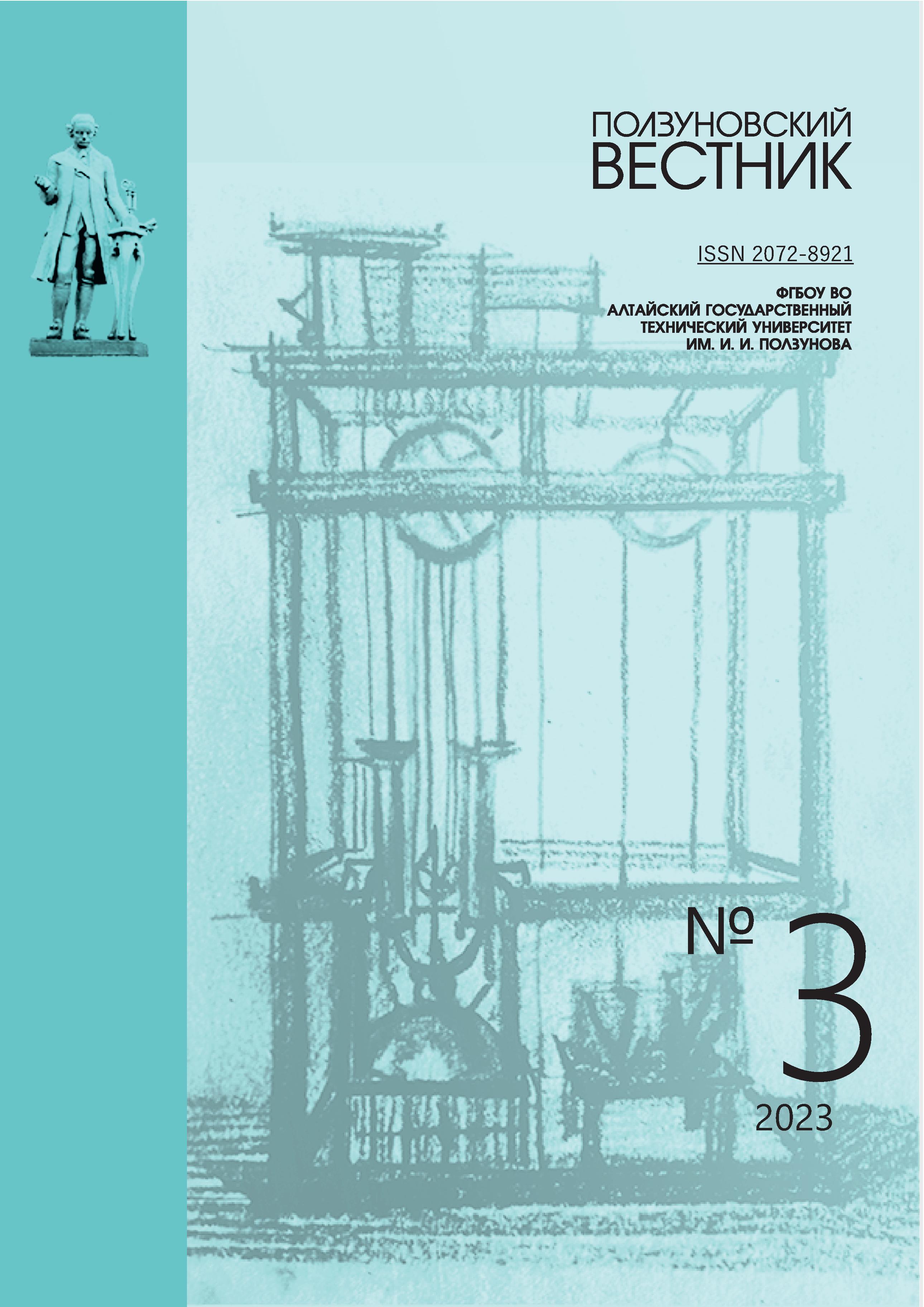ЭФФЕКТ БИОЛОГИЧЕСКОЙ И ФИЗИЧЕСКОЙ ОБРАБОТКИ НА КАЧЕСТВО И ПОТЕРИ ГРУШ ПРИ ХРАНЕНИИ
RXBOSJ
DOI:
https://doi.org/10.25712/ASTU.2072-8921.2023.03.011Ключевые слова:
груши, Дево, Бере Гарди, Витаплан, электромагнитные поля, крайне низкая частота, ультра-фиолетовое излучение, потери, витамины, органолептические показатели.Аннотация
Груши – хорошо известный и распространённый вид фруктов, однако потери при их хранении могут достигать от 20 до 60 % собранного урожая. Это делает актуальным проведение исследований, направленных на повышение эффективности способов их хранения. В ходе исследования было изучено влияния обработок биопрепаратом Витаплан, электромагнитными полями крайне низких частот и ультрафиолетовым излучением на качество, потери и изменение химического состава груш сортов Дево и Бере Гарди при хранении. Оценка органолептических показателей обработанных различными способами груш по категориям «Вкус», «Запах», «Состояние мякоти», «Побурение мякоти» и «Увядание» показала возможность применения этих видов обработки для сохранения качества. Так, при хранении груш при температуре 5±1 ºС в течение 75 суток среднее суммарное количество баллов обработанных образцов было на 0,9‒3,0 % выше, чем у контрольных образцов. При хранении груш при температуре 25±1 ºС (провоцирующие условия) в течение 14 суток среднее суммарное количество баллов обработанных образцов было на 0,8–7,6 % выше, чем у контрольных образцов. При этом в большинстве случаев наибольшей эффективностью обладала обработка биопрепаратом Витаплан. Величина общих потерь в обработанных образцах груш после хранения по сравнению с контролем была ниже на 0,2–8,3 % в зависимости от сорта и параметров хранения. Изучение химического состава объектов исследования показало, что выбранные виды обработки позволяют также сократить потери биологически активных веществ. В частности, потери витамина С были ниже на 1,4–8,5 %, витамина Р – на 1,2–7,4 %. Полученные данные могут быть использованы для совершенствования существующих способов хранения груш.
Библиографические ссылки
Присухина Н.В., Непомнящих Е.Н., Ермош Л.Г. Исследование показателей мелкоплодной груши Сибири для дальнейшего применения в кондитерской отрасли // Ползуновский вестник. 2020. № 4. С. 26‒30. DOI: 10.25712/ASTU.2072-8921.2020.04.005.
FAOSTAT : официальный сайт. URL : http://www.fao.org/faostat/en/#home (дата обраще-ния 10.01.2023).
Таможенная статистика внешней торговли РФ : официальный сайт. URL : http://stat.customs. gov.ru/ (дата обращения 10.01.2023).
Antifungal effects of low environmental risk compounds on development of pear postharvest diseases: Orchard and postharvest applications / M.C. Lutz [et al.] // Scientia Horticulturae. V. 295. 2022. 110862. DOI: 10.1016/j.scienta.2021.110862.
Detection of Botrytis cinerea field isolates with multiple fungicide resistance from table grape in Sicily / A. Panebianco [et al.] // Crop Protection. V. 77. 2015. pp. 65–73. DOI:10.1016/j.cropro.2015.07.010.
Induced resistance to control postharvest de-cay of fruit and vegetables / G. Romanazzi [et al.] // Posthar¬vest Biology and Technology. 2016. № 122. pp. 82–94. DOI: 10.1016/j.postharvbio.2016.08.003.
Recent advances in postharvest technology of Asia pears fungi disease control: A review / W. Oyom [et al.] // Physiological and Molecular Plant Pathology. V. 117. 2022. 101771. DOI: 10.1016/j.pmpp.2021.101771.
Semi-commercial testing of regional yeasts selected from North Patagonia Argentina for the bio-control of pear postharvest decays / M.C. Lutz [et al.] // Biological Control. V. 150. 2020. 104246. DOI: 10.1016/j.biocontrol.2020.104246.
Postharvest UV-C irradiation inhibits black-head disease by inducing disease resistance and reducing mycotoxin production in ‘Korla’ fragrant pear (Pyrussinkiangensis) / T. Sun [et al.] // Interna-tional Journal of Food Microbiology. V. 362. 2022. 109485. DOI: 10.1016/ j.ijfoodmicro.2021.109485.
Improvement of microwave treatment with immersion of fruit in water to control brown rot in stone fruit / M. Sisquella [et al.] // Innovative Food Science & Emerging Technologies. 2014. № 26. рр. 168–175. DOI: 10.1016/ j.ifset.2014.06.010.
Effect of host and Moniliniaspp: variables on the efficacy of radio frequency treatment on peaches / M. Sisquella [et al.] // Postharvest Biology and Technology. 2014. № 87. рр. 6–12. DOI: 10.1016/j.postharvbio.2013.07.042.
Enhancing hydroxycinnamic acids and fla-van-3-ol contents by pulsed electric fields without affecting quality attributes of apple / A. Ribas-Agustí [et al.] // Food Research International. 2019. № 121. pp. 433–440. DOI: 10.1016/j.foodres.2018.11.057.
Николаева М.А. Товароведение плодов и овощей. М. : Экономика, 1990. 288 с.
Бурштейн А.И. Методы исследования пищевых продуктов. К. : Госмедиздат УССР, 1963. 643 с.
Методы биохимического исследования растений : учебник / А.И. Ермаков [и др.]. 3-е изд., перераб. и доп. Л. : Агропромиздат, 1987. 430 с.
Запрометов М.Н. Основы биохимии фенольных соединений : учеб. пособие для биологических специальностей университетов. М. : «Высшая школа», 1974. 75 с.
Influence of electromagnetic fields and mi-crobial pesticide Vitaplan on stability of apples dur-ing storage / T.V. Pershakova [et al.] // IOP Confer-ence Series: Earth and Environmental Science. 2021. Т. 640. 022053. DOI: 10.1088/1755-1315/640/2/022053.
Влияние вида обработки на показатели товарного качества и срок хранения ягод земля-ники / Т.В. Першакова [и др.] // Известия ВУЗов. Пищевая технология. 2022. № 4 (388). С. 51–55. DOI: 10.26297/0579-3009.2022.4.9.
Разработка физико-биологических методов за-щиты для повышения сохранности и качества яблок / М.Д. Назарько [и др.] // Известия ВУЗов. Пищевая технология. 2019. № 5–6 (371–372). С. 53–57. DOI: 10.26297/0579-3009.2019.5-6.14.
Загрузки
Опубликован
Как цитировать
Выпуск
Раздел
Лицензия
Copyright (c) 2023 Татьяна Викторовна Першакова, Григорий Анатольевич Купин, Татьяна Викторовна Яковлева, Владимир Николаевич Алёшин

Это произведение доступно по лицензии Creative Commons «Attribution» («Атрибуция») 4.0 Всемирная.
















 .
. Контент доступен под лицензией
Контент доступен под лицензией 
